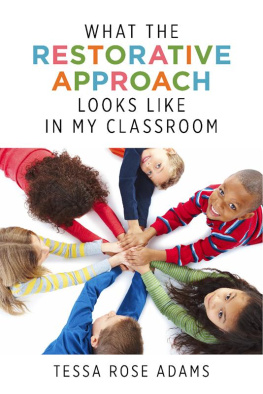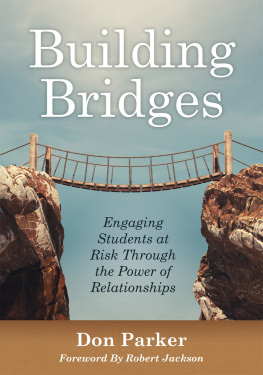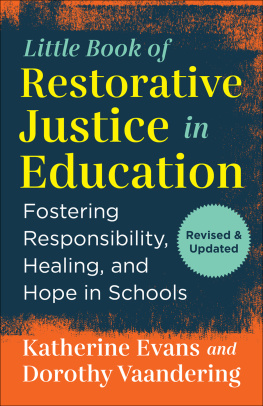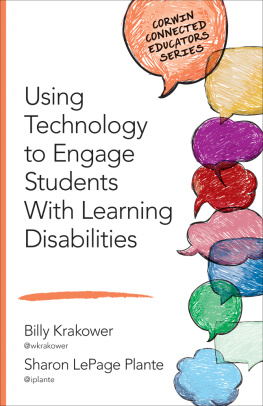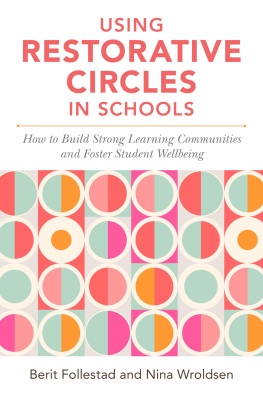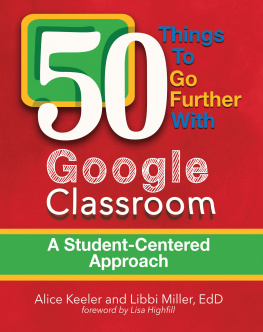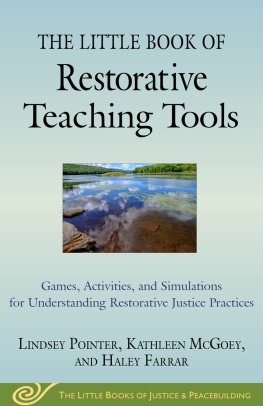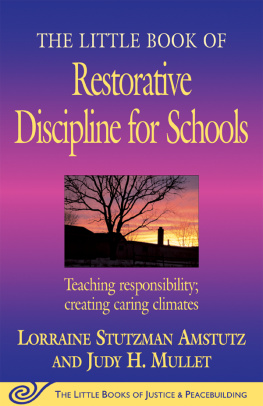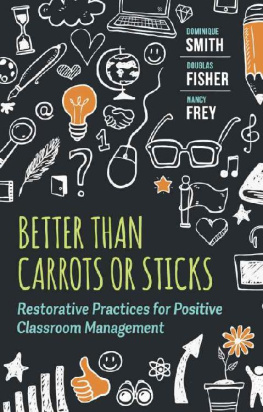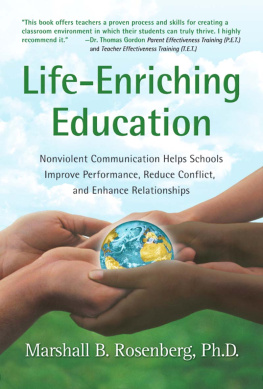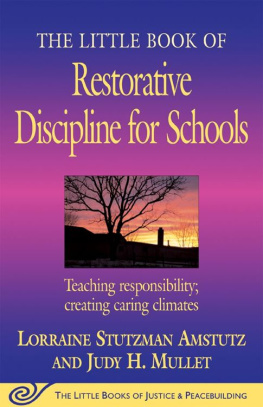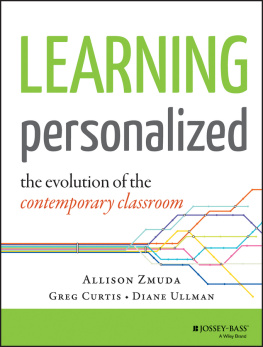
copyright all rights reserved 2013
ISBN: 9781483501628
Table of Contents
Introduction

My introduction to the concept of using the restorative approach in a school setting happened one morning in 2009 as our staff began our first full day together at cole Saint Catherines School in Halifax, Nova Scotia. When we walked into the gymnasium for the opening meeting, we could see the chairs were arranged in a huge circle. Everyone was there, everyonenot just the teachers and administration. I never experienced this type of arrangement before and began to wonder what was going on. It seemed as if we were all equally important whether we were teachers, caretakers, kitchen staff, or part of the administration. That was the beginning of our journey to creating a restorative community that would eventually include every adult and every child as well as the families of our students.
Soon after our first circle, we began to learn more and more about the restorative approach from the International Institute for Restorative Practices. From the beginning, I knew deeply that this was going to change who I was as a person and as a teacher. I connected to it right away. Others needed more time. Each one of us learned something different, processed it in a different way and used it in different ways. That is the beauty of it! It is okay to use it in your own way since it can be adapted to your particular situation.
None of this would have happened if our principal, Richard Derible, had decided that it was too much work or it cost too much or it would cause too many challenges. He took the chance and set us on our journey. I will be forever grateful. He is the type of person that many people admire, look to for guidance, and consider a friend. I am one of those people, and it is with my deepest gratitude that I dedicate this book to him. Thank you, Richard! I owe you a great deal!
There are resources available to read if you want the theory part of the restorative approach. But I decided to write this book so that you could see how you could use it in an every day practical sense and in a detailed way in a classroom. I hope you will find something here that you can use right away and that you will get a clear picture of the merits for trying it. You do not have to be a teacher to use it. Anyone who works with children or other adults, for that matter, would benefit from using the restorative approach. It really is an approach. It is not just a set of practices or routines or dos and donts. It is a whole approach. Please take it from someone who has been using the restorative approach since 2009, it DOES work!
Chapter One
Why Use the Restorative Approach in Your Classroom?

Would you like your troubled students to think of school as their safe haven? Would you like your students to develop a deep sense of empathy for their schoolmates and for you? Do you want to increase your students emotional and academic development? Do you want to be able to deal with conflicts in a way that keeps everyones dignity and sense of self-worth intact? Most importantly, do you want to develop and maintain relationships with each of your students? If you said yes to any or all of these questions, please keep reading.
Not long ago, a group of people gathered together to learn from each other and to discuss how we could bring the restorative approach to every school in Nova Scotia. Richard Derible began his opening remarks by reminding us that one of the biggest needs of our students is to have a positive relationship with the adults in the schools they attend.
Positive relationships are a basic need. We are not made to do well on our own. We all have the need to feel connected to someone and to feel important to someone. My students have always responded better to what I have taught them when they feel that connection to me. If your students feel disconnected, you will see it in their behaviour and lack of learning. I guarantee it. They will work harder and do their best more often when they have a positive relationship with you.
Your students will learn about expected behaviour in a circle. They will learn how to listen, how to share, and how to verbalize their feelings (which some adults could learn how to do better). They learn things about each other that they would not have learned otherwise. But they also learn about you and realize that you are a person toonot just The Teacher. They begin to realize that you experience life too. When you can share and be real with them, they feel safe enough to share and be real with you. It is an honour to have your students show you that they trust you enough to open up to you about the troubles they are dealing with in their lives.
Sadly, more and more of our students are coming to school burdened with problems. It never ceases to amaze me what some young children deal with on a daily basis. But if you take the time to listen, they know they have been heard, someone cares, and that gives them hope that they can deal with their problems. You do not need to have all the answers. You may want to consult someone else for support or advice for them. But most of the time, all they need is an adult to give them eye contact when they talk and to say a kind word when they need it, so that they know they have been heard. I know it makes my day easier when I have that in my own life. Leo Buscaglia said it best, Too often we underestimate the power of a touch, a smile, a kind word, a listening ear, an honest compliment, or the smallest act of caring, all of which have the potential to turn a life around. (Buscaglia)
In 2011, during the March school break, our family pet passed away. He had been part of my family for thirteen years, and it was an overwhelming time for me. I was grieving as if he were my child. I knew that my class would be looking forward to sharing what they did during their week-long break at circle time. I had a choice to make. Either I would not share what had happened on my break and pick something easier to talk about, or I would be real with my students and tell them that I was having a difficult day and why. I weighed the pros and cons. In the end, I decided that if I wanted them to feel safe in being honest with me about the painful things in life then I had to set the example of how to do it.
When it was my turn to speak, I took a deep breath before I began. My students knew right away that something was different with Mrs. Adams. They became quiet and listened respectfully. I somehow managed to keep it together. I shared some of what had happened and told them that I was having a hard time coping with it. But I reassured them that as time went on, I would feel better and that it was all part of the life experience. Even though they were young, they understood. They all gathered around me after our circle time and took turns giving me hugs. I felt loved and supported by them. They knew they could share their own experiences of loss with mewhich they did. It really brought us together as a class-community.
About two months later, in our circle time, we were sharing what we were looking forward to doing on the weekend. I said that I was excited to be buying a Flowering Dogwood tree. One of my students quickly raised her hand and asked why dont you just get a DOG instead? I laughed. She was right! Why not just get a dog instead?! She knew that was what I really wanted. So I did. After we got our new puppy, I introduced him to the class, and he became our class mascot. When I see my students, years later, they still ask me how he is doing.
Next page
